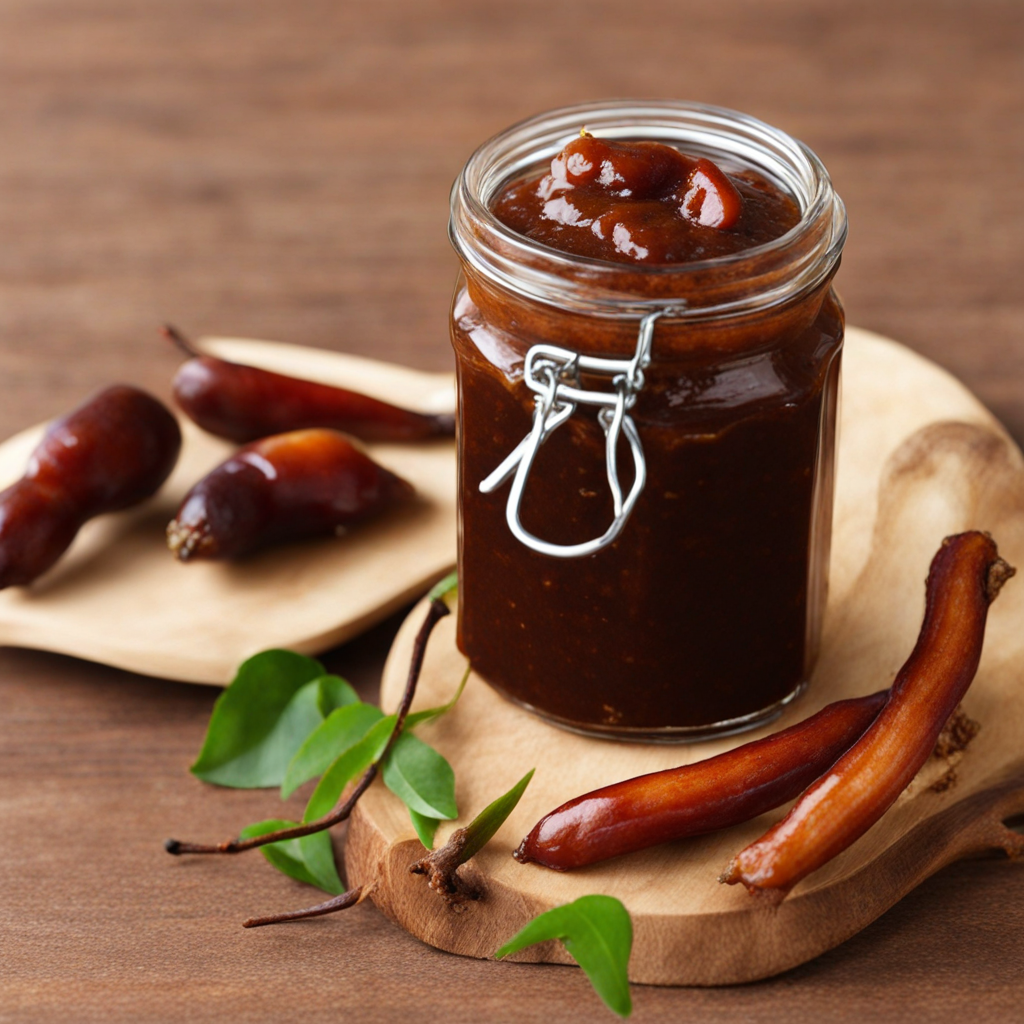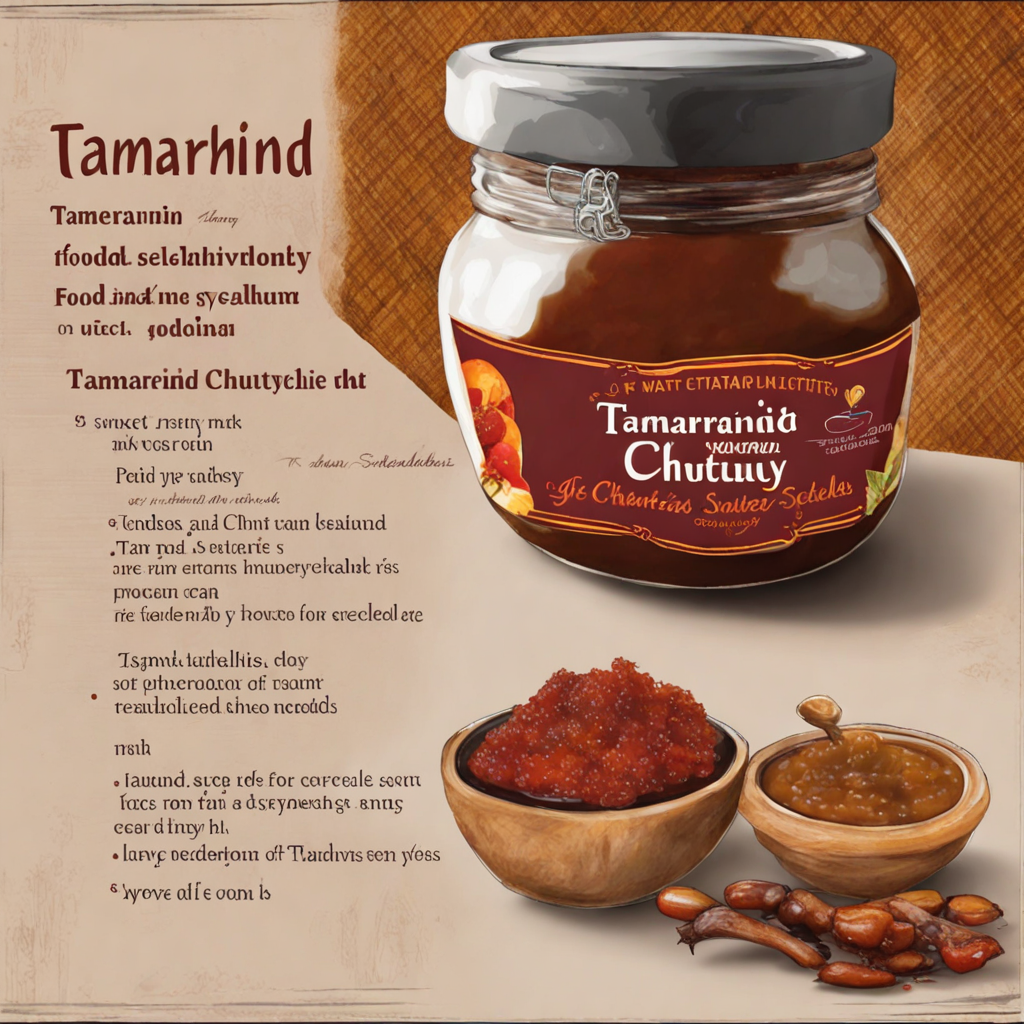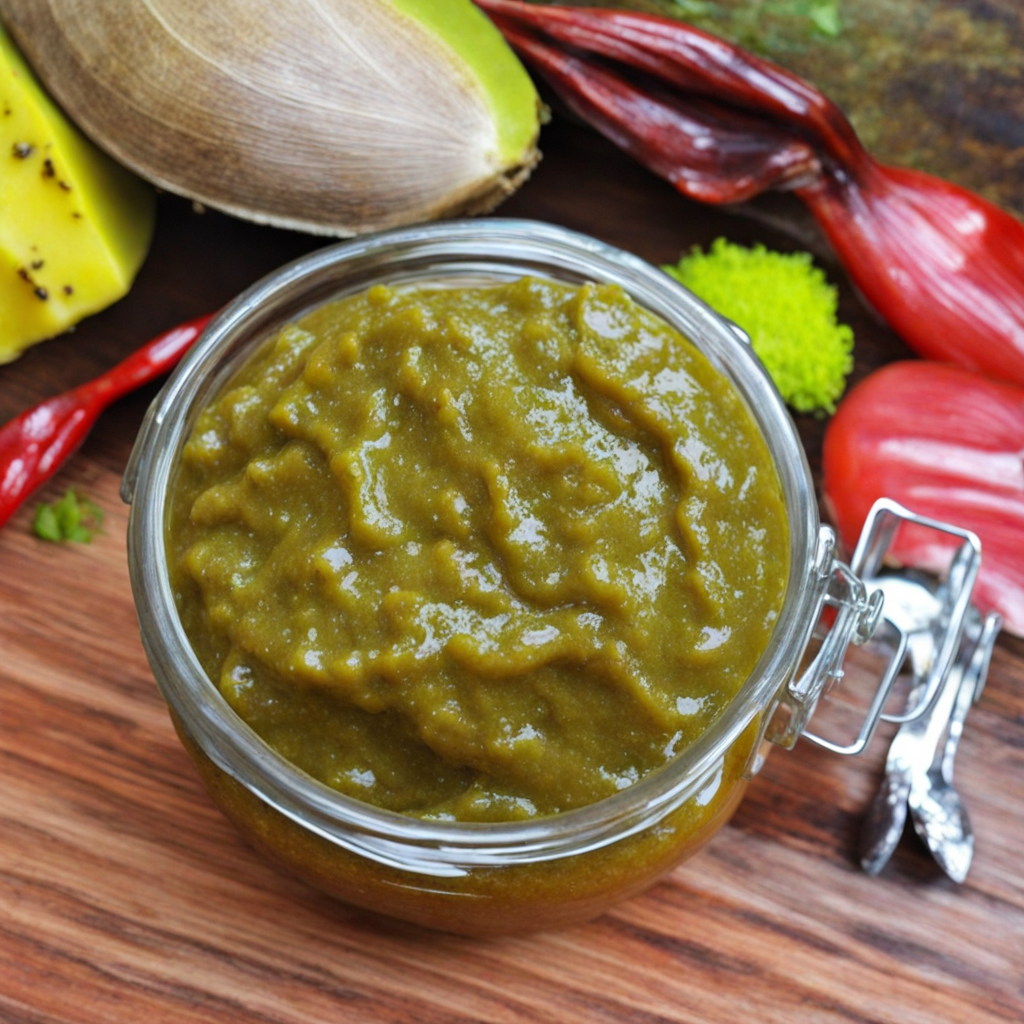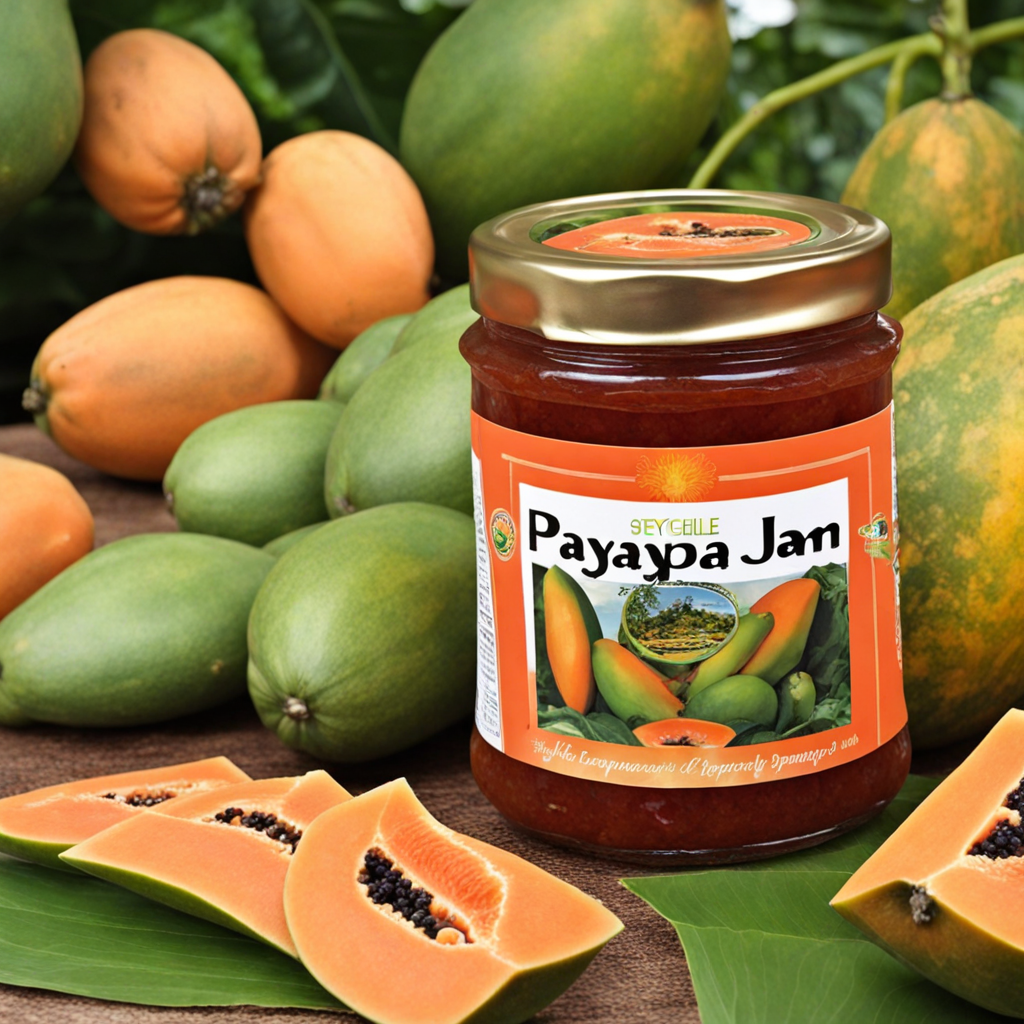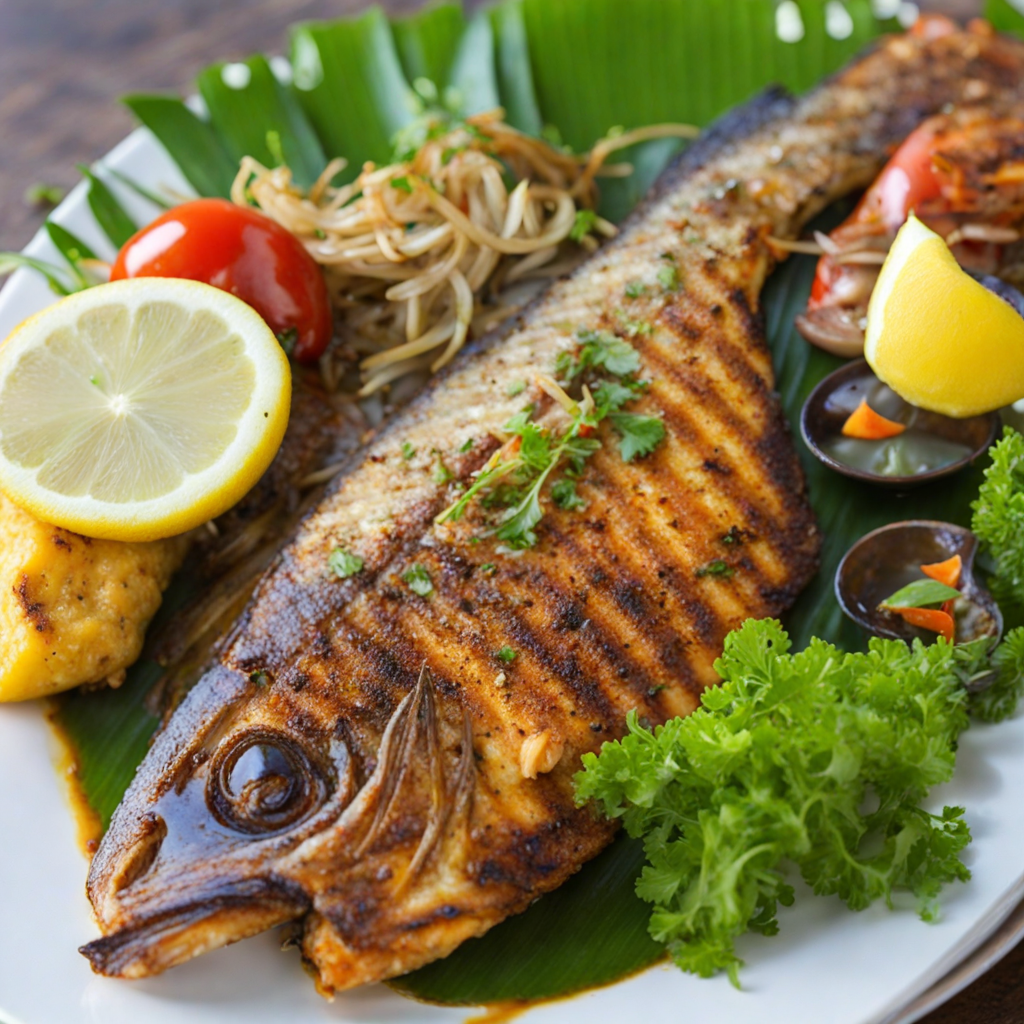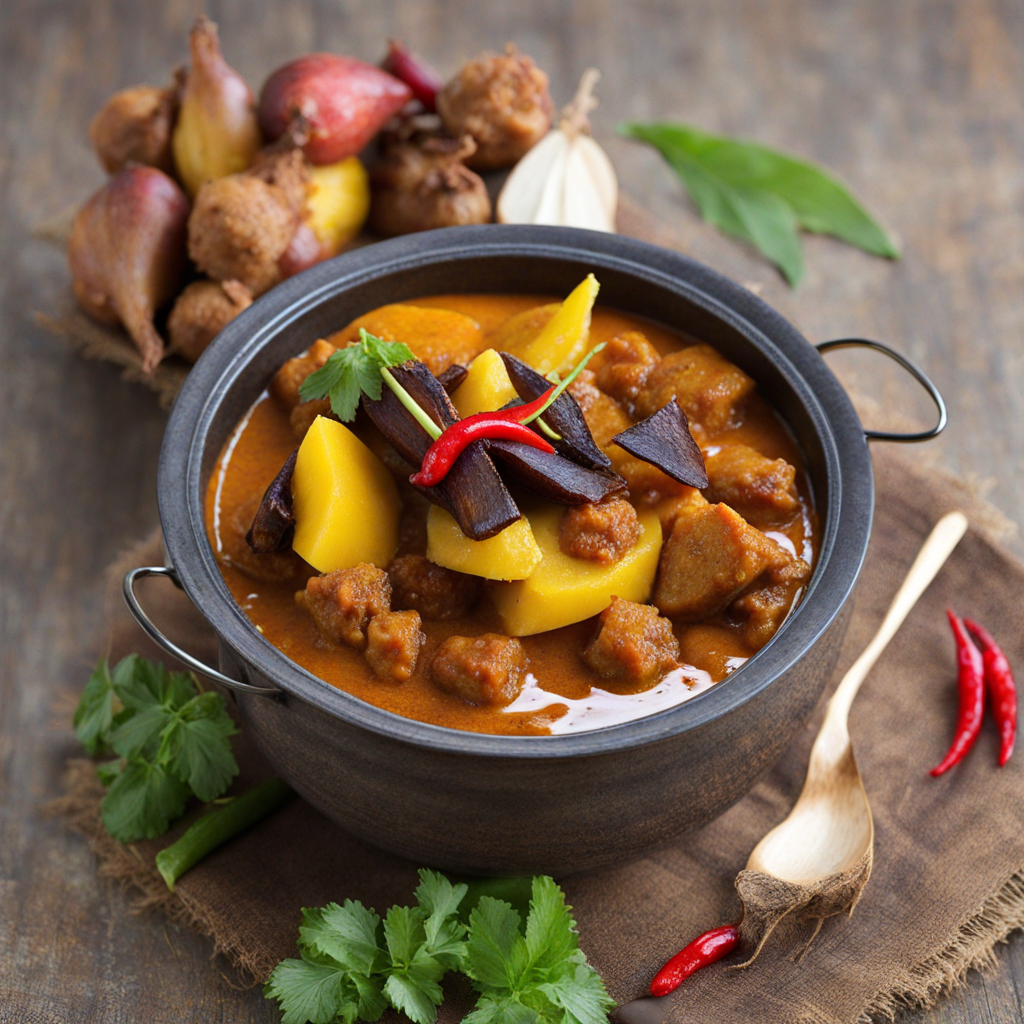Tamarind Chutney
Tamarind Chutney from Seychelles is a vibrant and tangy condiment that embodies the island's rich culinary heritage. Made primarily from tamarind pulp, this chutney combines sweet, sour, and spicy notes that dance on the palate, making it a versatile accompaniment to various dishes. The deep, dark brown color hints at the intense flavor profile, while the texture is smooth with a slight thickness that allows it to cling beautifully to food. The addition of ingredients such as sugar, chili peppers, garlic, and a touch of vinegar enhances its complexity, creating a well-rounded taste that can elevate any meal. The sweet and sour nature of Tamarind Chutney is particularly celebrated in Seychelles, where it complements the fresh seafood that is abundant in the region. It pairs exquisitely with grilled fish, adding a zesty kick that cuts through the richness of the meat. Many locals also enjoy it with traditional dishes like lentil curries or as a dipping sauce for crispy snacks, showcasing its adaptability in both savory and sweet contexts. The chutney’s unique flavor profile brings a delightful punch that can transform even the simplest of meals into a gourmet experience. Beyond its taste, Tamarind Chutney is often appreciated for its vibrant, lively presence on the plate. The bright flavors and aromatic spices evoke the lush landscapes of Seychelles, making every bite a journey through the island's tropical essence. Whether slathered on a sandwich or served alongside a charcuterie board, this chutney invites food lovers to explore the delightful fusion of flavors that define Seychellois cuisine, leaving a lasting impression that beckons for a second taste.
How It Became This Dish
The History of Chatini Tamarin: A Culinary Jewel of Seychelles #### Origins and Ingredients Chatini Tamarin, a beloved condiment from the Seychelles, is a vibrant reflection of the archipelago’s rich cultural tapestry and its diverse culinary influences. The dish is primarily made from tamarind, a tangy fruit that has roots tracing back thousands of years to Africa and Southeast Asia. The tamarind tree, known for its dark brown pods filled with a sticky, sweet-sour pulp, thrives in tropical climates, making it a staple ingredient in many tropical cuisines. In Seychelles, the use of tamarind can be attributed to the islands' diverse demographics, which include influences from African, Indian, Chinese, and European settlers. The unique blend of flavors in Chatini Tamarin is a testament to this multicultural heritage. Alongside tamarind, the condiment often includes ingredients such as onions, chilies, garlic, ginger, and sometimes the addition of coconut or other spices, resulting in a complex flavor profile that is both piquant and aromatic. #### Cultural Significance Chatini Tamarin is more than just a condiment; it is a cultural emblem that speaks to the Seychellois way of life. In the Seychelles, food is an integral part of social gatherings, celebrations, and everyday life. The preparation and sharing of meals often serve as a medium for community bonding and storytelling. Chatini Tamarin, with its sharp and zesty flavor, complements a wide array of dishes, from grilled fish and meats to rice and lentils, making it a staple on Seychellois dining tables. The dish embodies the spirit of sharing and hospitality that is prevalent in Seychellois culture. It is often served at family gatherings, weddings, and local festivals, where its presence is synonymous with warmth and conviviality. The act of preparing Chatini Tamarin can also be a communal affair, with family members or friends coming together to blend the ingredients, sharing laughter and stories as they create this beloved condiment. #### Development Over Time The history of Chatini Tamarin mirrors the evolution of Seychellois cuisine itself. In the early days of settlement in the Seychelles, the local diet was largely based on the resources available on the islands—fish, coconuts, and root vegetables. The arrival of various settlers introduced new ingredients and culinary techniques, leading to a gradual transformation in the local food culture. The tamarind fruit was likely introduced to the islands through trade and exploration. As it began to flourish in the local environment, it became a valuable ingredient in the Seychellois pantry. The blending of tamarind with local spices and other ingredients led to the creation of Chatini Tamarin as it is known today. Over time, each generation has added its own twist to the recipe, incorporating variations that reflect personal tastes and regional influences. In the late 20th century, as Seychelles became a popular tourist destination, the culinary scene began to see significant changes. Chefs started to showcase local ingredients and traditional dishes, including Chatini Tamarin, to a broader audience. This exposure not only popularized the condiment beyond the islands but also allowed it to evolve further, as chefs experimented with modern interpretations while remaining true to its roots. #### Modern Interpretations and Global Influence In contemporary Seychelles, Chatini Tamarin has found its way into various culinary contexts, from street food stalls to gourmet restaurants. Chefs and home cooks alike are experimenting with the condiment, creating unique variations that may include different fruits or spices, thus expanding its versatility. For instance, some versions incorporate mango or pineapple, adding a fruity sweetness that complements the sourness of the tamarind, while others might introduce a touch of mint or coriander for added freshness. The global popularity of Seychellois cuisine has also led to an increased interest in traditional condiments like Chatini Tamarin. As more people become aware of the diverse flavors of the islands, the condiment is being embraced in international culinary circles, often featured in fusion dishes and gourmet preparations. Its ability to enhance the flavor of various dishes makes it an appealing choice for chefs looking to add a touch of Seychellois flair to their menus. #### Conclusion Chatini Tamarin is not merely a condiment; it is a symbol of the Seychelles' rich cultural heritage and a testament to the islands' history of culinary fusion. From its origins with the tamarind fruit to its place at the heart of Seychellois cuisine, the development of Chatini Tamarin reflects the dynamic interplay of cultural influences that have shaped the archipelago over centuries. As the islands continue to navigate the complexities of globalization and cultural exchange, Chatini Tamarin stands as a reminder of the importance of tradition and the joy of sharing food. Whether enjoyed at a family gathering, a local market, or a fine dining establishment, Chatini Tamarin encapsulates the essence of Seychellois hospitality—an invitation to savor not just the flavors of the dish, but also the rich stories and traditions that it carries.
You may like
Discover local flavors from Seychelles


